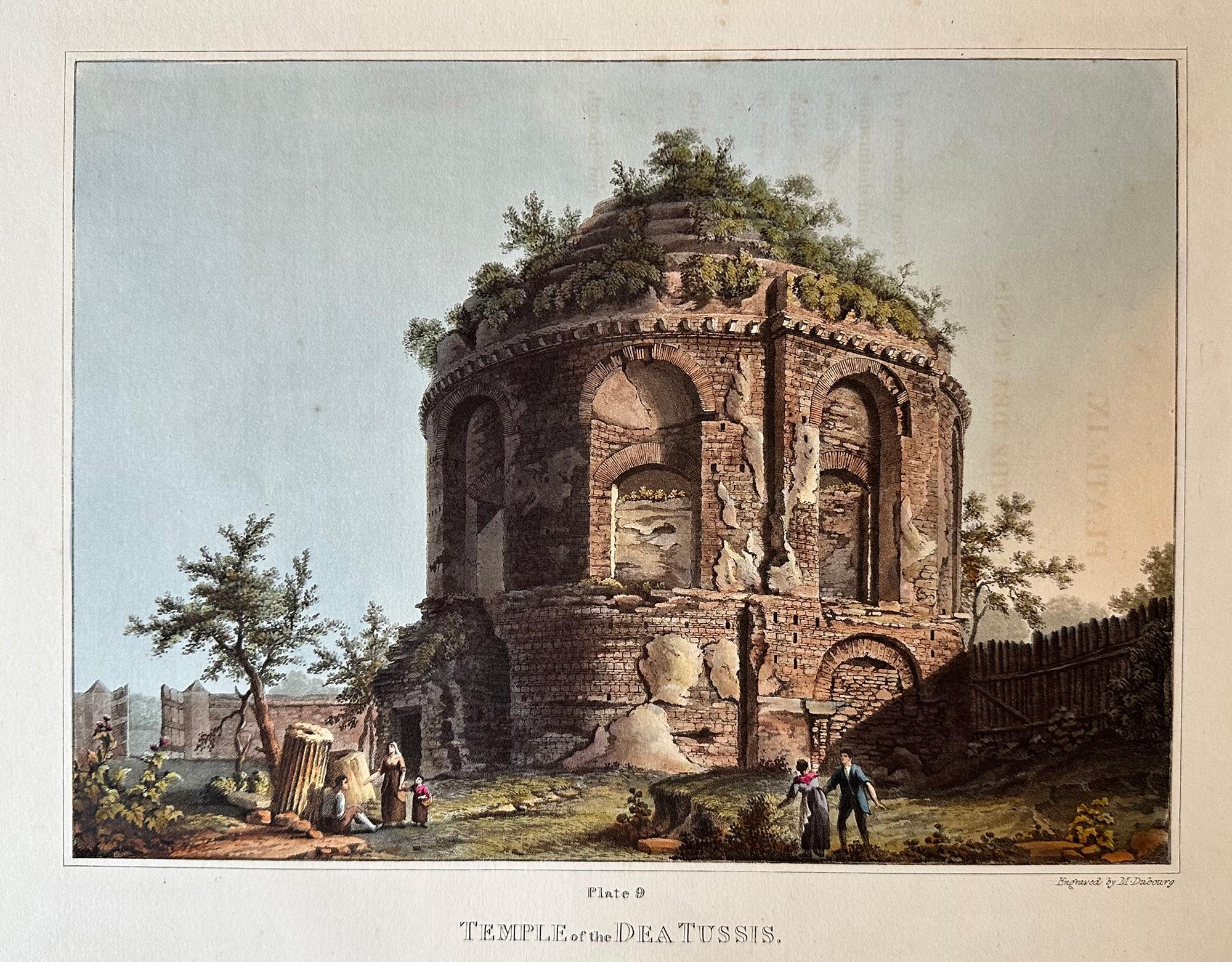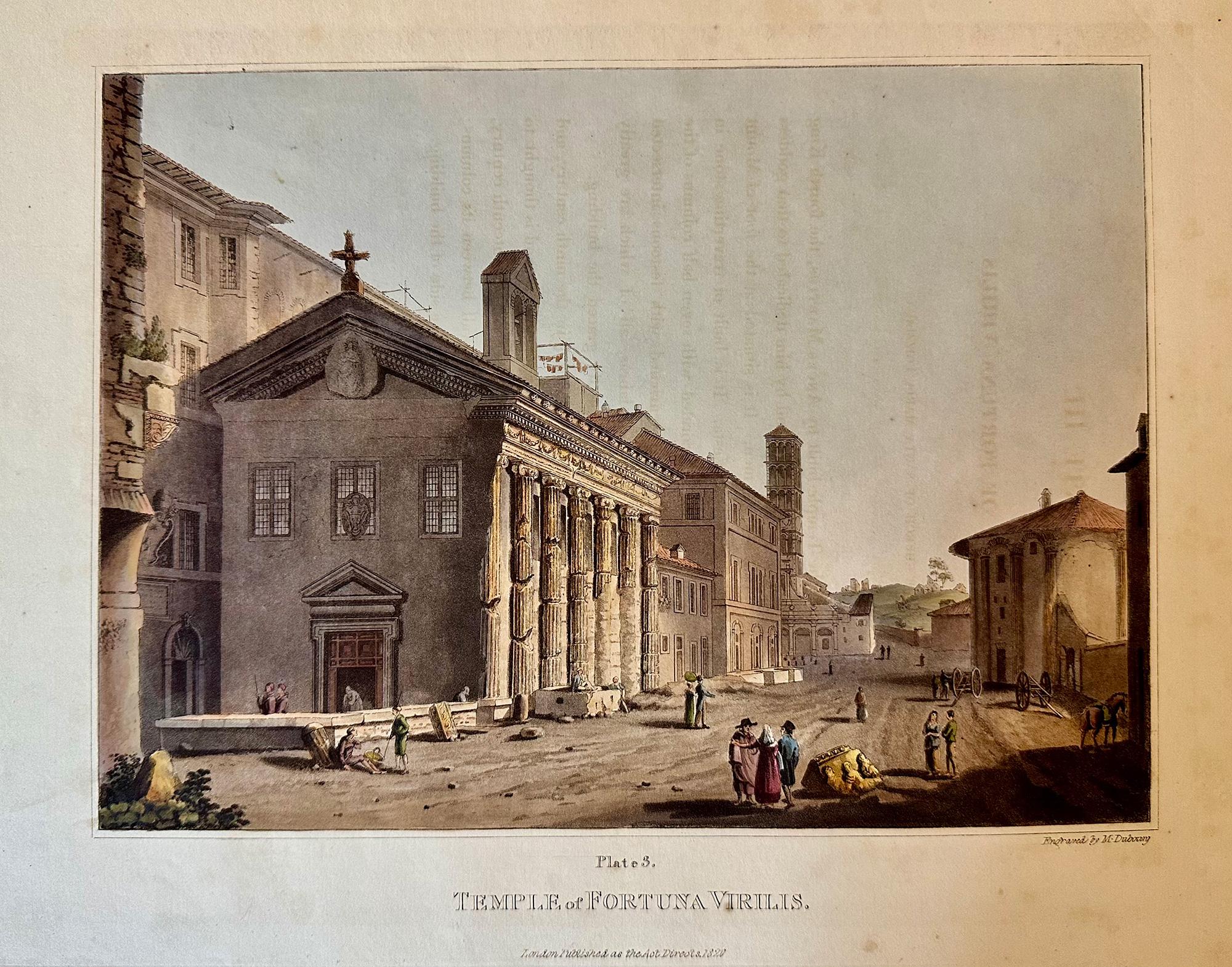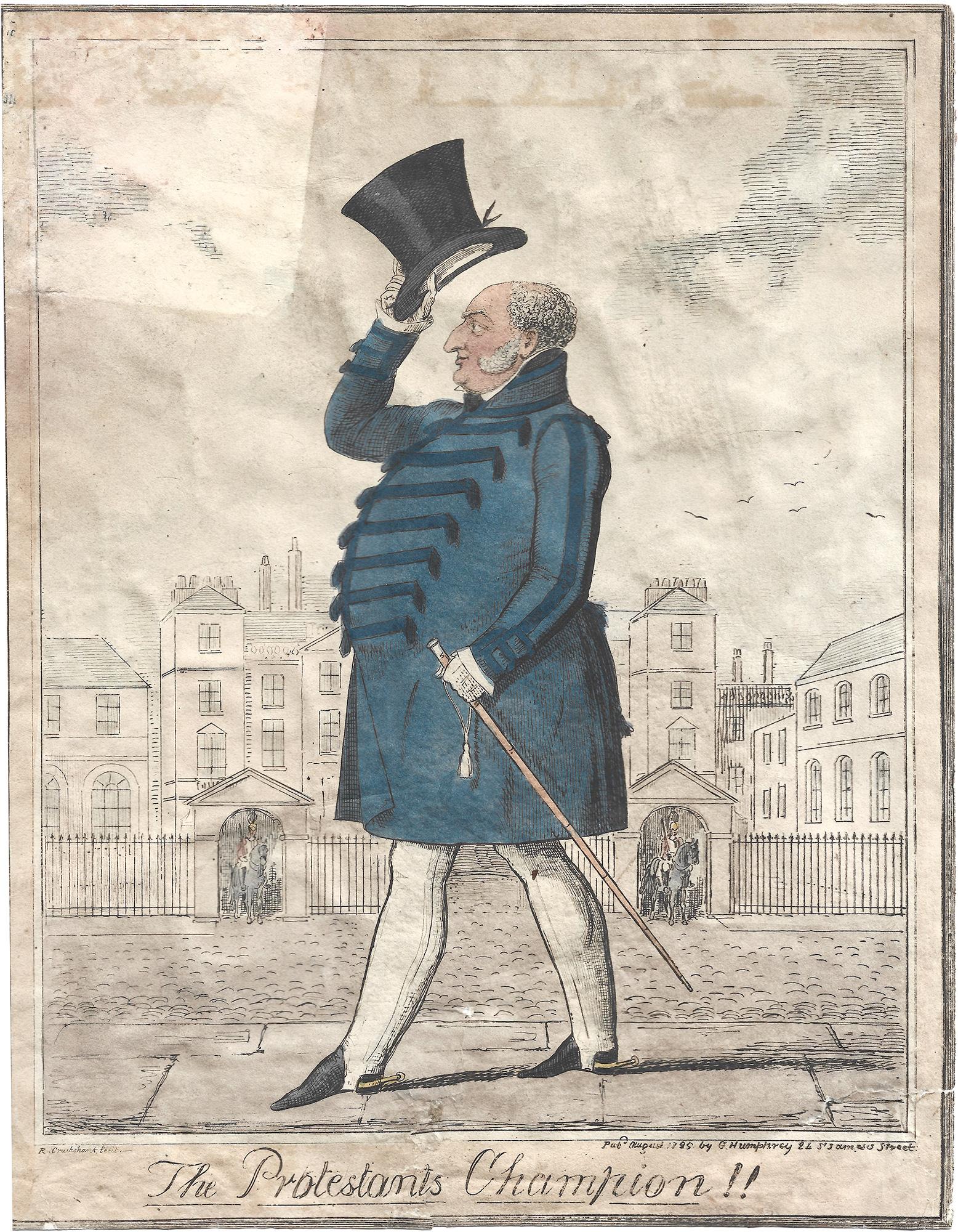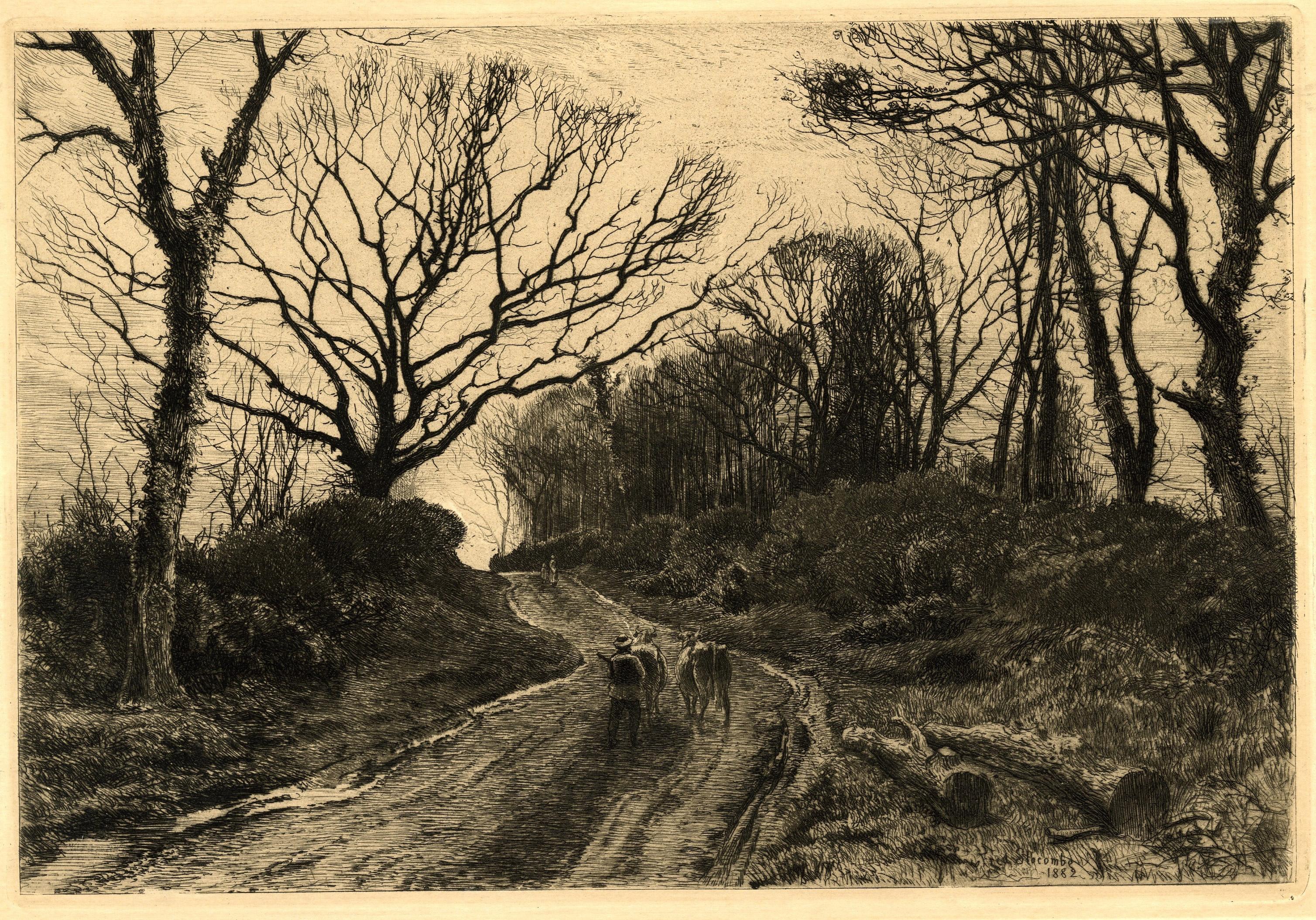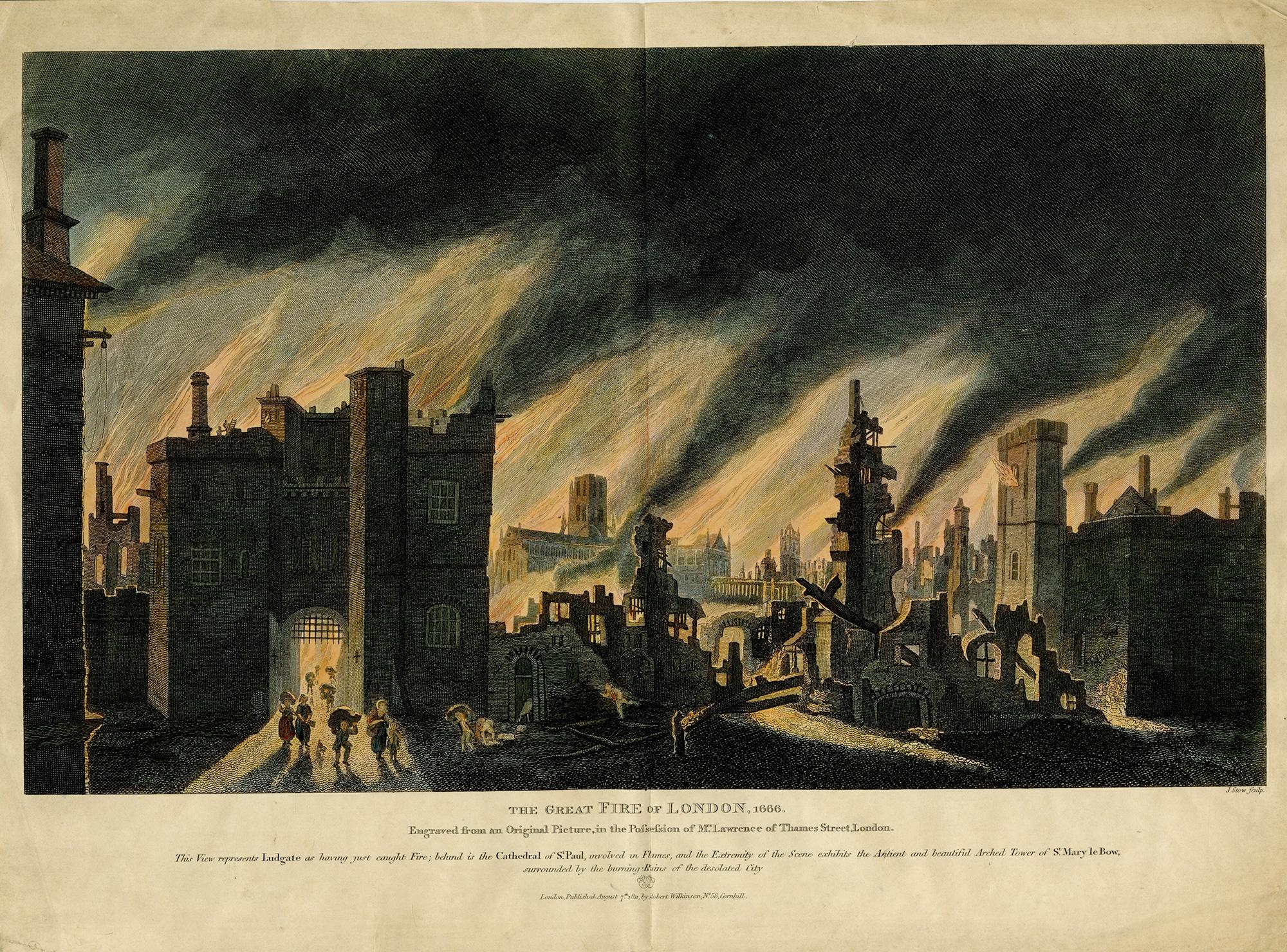Items Similar to 18th-Century Engraving, Ancient English Dresses
Want more images or videos?
Request additional images or videos from the seller
Unknown18th-Century Engraving, Ancient English Dressesc. 1797
c. 1797
About the Item
This late 18th-century engraving from Thomas Bankes’ ‘New and Authentic System of Universal Geography’ depicts the evolution of ladies' fashion between 1590 and 1630.
In this unusual gathering of time-sensitive females, we see a representative from 1590, 1626, and 1630. Nowhere else would you witness these women gathered together, for it would be an extraordinary faux pas to don late 16th-century attire in the 1630s. Heavens, lady number one is utterly hatless, the shame of it all.
Upon a visit to England in 1592, a visitor remarked "many a one does not hesitate to wear velvet in the streets, which is common with them, whilst at home perhaps they have not a piece of dry bread."
The publication ‘New and Authentic System of Universal Geography’ had the boldest of ambitions. Authored by the industrious Reverend Thomas Bankes, the vicar of Dixton, Monmouthshire, it sought to explain the known World in all its nuance and complexity.
The title page is a veritable smorgasbord of exciting claims including ‘genuine history and description of the whole world’ and ‘complete history of every empire, kingdom and state’. It’s a ‘complete atlas’, a ‘complete guide to geography, astronomy, the use of globes, maps etc’, ‘also an account of the most remarkable battles, sieges, sea-fights, and various revolutions that have taken place in different parts of the World’.
‘The whole forming an authentic and entertaining account of everything worthy of notice throughout the whole face of nature, both by land and water’.
What more could you need? Throw in a few plays and it’s your perfect desert island companion.
This was Reverend Thomas Bankes’ lasting legacy - a gargantuan folio of 990 double-columned pages. His life’s work. Quite an inspiration.
Held in a contemporary glazed frame.
Established in 2017, Brave Fine Art is a premier English art dealership based in Cheltenham with clients including national galleries and country estates. Our team includes a conservator, logistics specialist and art historian. Over 1,000 paintings have been transported to the US and Canada safely with hundreds of glowing reviews.
We set our prices fairly from the start as we prefer to sell quickly and continually evolve the collection. Around 40 new discoveries are added every month. If you have any questions at all, we’d love to hear from you.
- Creation Year:c. 1797
- Dimensions:Height: 12 in (30.48 cm)Width: 13 in (33.02 cm)
- Medium:
- Movement & Style:
- Period:
- Condition:Artwork presents well.
- Gallery Location:Cheltenham, GB
- Reference Number:1stDibs: LU2328211644742
About the Seller
5.0
Platinum Seller
These expertly vetted sellers are 1stDibs' most experienced sellers and are rated highest by our customers.
Established in 2017
1stDibs seller since 2023
130 sales on 1stDibs
Typical response time: <1 hour
- ShippingRetrieving quote...Ships From: Cheltenham, United Kingdom
- Return PolicyA return for this item may be initiated within 14 days of delivery.
More From This SellerView All
- 19th-Century Fashion Advertising, Our Styles For The Present Season, LithographLocated in Cheltenham, GBThis charming late 19th-century lithograph was produced by Freudenthal & Co for clothing manufacturers, TJ Thomas & Ellis Jones, to showcase the latest fashion. There are 17 styles including the DB Gladstone (after the Prime Minister), Ulster, Demi Sac, Tourist Blouse, Frock Coat and D B Prince Alfred. There’s also a Riding Habit for the lady. TJ Thomas & Ellis Jones were based at 138 Queen Victoria Street...Category
19th Century English School Figurative Prints
MaterialsPaper, Lithograph
- George Sidney Hunt After Edwin Long RA, In the Wilderness, EngravingLocated in Cheltenham, GBThis late 19th-century mixed-method engraving by George Sidney Hunt (1856-1917) after Edwin Long RA (1829-1891) is one in a series of three depicting the Old Testament story of Jephthah. Here, we see Jephthah’s daughter contemplating her fate during a two-month sojourn in the wilderness. The heart-rending story of Jephthah captured Victorian minds and inspired artist Edwin Long to produce three exhibition pieces, which are now held at the Russell Cotes Art Gallery & Museum. Prior to a fearsome battle with the Ammonites, Jephthah, a leader in Isreal, committed a vow to God that he’d make a sacrifice if his armies were triumphant. “whatever comes out of the door of my house to meet me when I return in triumph from the Ammonites will be the Lord’s, and I will sacrifice it as a burnt offering...Category
19th Century Academic Figurative Prints
MaterialsPaper, Engraving
- Axel Wallert, Seated Woman With Mandolin, EtchingLocated in Cheltenham, GBThis exquisite early 20th-century etching by Swedish artist Axel Wallert (1890-1962) depicts a seated woman playing the mandolin. It’s brimming with style yet captured with sensitivi...Category
1910s Post-Impressionist Figurative Prints
MaterialsPaper, Etching
- Albert Kruger After Max Liebermann, The Flax Barn at Laren, EtchingLocated in Cheltenham, GBThis late-19th-century etching by German draughtsman Albert Kruger (b. 1858) is after a painting by Max Liebermann (1847-1935). The rhythmical monotony of the spinners, organised like a rigid machine, echoes through the low barn. Youths, hunched by square windows, wind flax onto spindles. While women stand in clogged feet, working tirelessly with aching bones. Liebermann captured their daily grind with aplomb, avoiding sentiment in favour of laborious reality. Yet, amid this harsh environment, he celebrates their efforts. The composition conveys determination with its lines and strong verticals while the atmosphere is one of steel rather than tortuous circumstance. Liebermann was a realist yet he found light among the ordinary. Originally published in The Art Journal...Category
1890s Victorian Interior Prints
MaterialsEtching, Paper
- Walter Hancock’s Enterprise Steam Omnibus, 19th-Century Hand-Coloured LithographLocated in Cheltenham, GBThis charming mid-19th-century hand-coloured lithograph depicts the ‘Enterprise Steam Omnibus’, the most successful steam carriage of its period. In the early 19th century, long-distance travel was predominantly undertaken by horse-drawn carriages. Yet, every so often, the clitter-clatter of hooves was abruptly overshadowed by the whir of steam-powered technology. From around 1801, several plucky inventors began developing carriages which could propel themselves via steam. The majority were notoriously unreliable, often breaking down, too slow to be practical, and occasionally exploding. The first steam-powered carriage, invented by Richard Trevithick of Cornwall, made its debut in 1801. It was known as ‘The Puffing Devil’ or ‘Captain Dick’s Puffer’ and said to cause quite a fright when trundling towards you. But this, like several others, couldn’t sustain the rigours of regular long distance trips, which were required to support the cost of running them. Walter Hancock’s (1799-1852) carriages were different. They became the first to run regularly - initially from Stratford and London via the ‘Infant’, a ten-seater bus, and in 1833, between London Wall and Paddington via ‘The Enterprise’, which we see here. Hancock’s machines were revolutionary due to his patented steam boiler (which had less risk of exploding). The Enterprise also had a pioneering suspended engine along with several other clever additions. Driving it was a tricky affair with three operators required - one to steer and control the speed, a second to monitor the boiler’s water level, and a third to maintain the fire. It’s unclear how the three communicated over the omnipresent din. In total, Hancock’s machines carried 12,761 passengers across 4,200 miles, an incredible achievement given the constraints of the day and the condition of the roads. The Enterprise was lauded in Europe and the US, with this particular image featuring in the New York press. The lithograph is based upon an earlier engraving...Category
Mid-19th Century English School More Prints
MaterialsPaper, Lithograph
- George Goodwin Kilburne, The Finishing Touch, WatercolourBy George Goodwin KilburneLocated in Cheltenham, GBThis early 20th-century watercolour by British artist George Goodwin Kilburne (1845-1932) depicts a loving scene from the early 19th century. With her daughter looking on, mother adj...Category
1910s English School Figurative Drawings and Watercolors
MaterialsPaper, Watercolor
You May Also Like
- Temple of the Dea TussisBy Matthew DubourgLocated in Middletown, NYLondon: J. Taylor, 1820. Etching and aquatint with engraving on cream wove paper with a gilded edge, 11 1/2 x 14 3/4 inches (290 x 374 mm), full margins. Small spots of adhesive resi...Category
Early 19th Century English School Landscape Prints
MaterialsAquatint, Handmade Paper, Engraving, Etching
- Temple of Fortuna VirilisBy Matthew DubourgLocated in Middletown, NYLondon: J. Taylor, 1820. Etching and aquatint with engraving on cream wove paper with a gilded edge, 11 1/2 x 14 3/4 inches (290 x 374 mm), full margins. Small spots of adhesive residue from a former mount at each edge on the recto. Light ghost impression in the area of the sky. Scattered minor areas of light brown discoloration, with a 3 3/4 inch horizontal edge loss along the lower left sheet edge, outside of the platemark. Colors remain fresh. Plate No. 3 from Wonders: Images of the Ancient World. Likely printed 1828. A view of the Temple of Hercules Victor...Category
Early 19th Century English School Landscape Prints
MaterialsHandmade Paper, Engraving, Etching, Aquatint
- 'The Protestants Champion!!' (... Duke of Sussex, Son of King George III)By George CruikshankLocated in Middletown, NYThis portrait of King George the III's son was published in the same year that Beethoven's Ninth Symphony premiered in London. 'The Protestants Champion!!' (Prince Augustus Frederick, Duke of Sussex...Category
Early 19th Century English School Portrait Prints
MaterialsWatercolor, Handmade Paper, Engraving, Etching
- The Way Home. A Winter EveningLocated in Middletown, NYA beautiful, dark impression of a bucolic cow path. Etching with drypoint on heavy cream wove paper, 6 5/8 x 9 7/8 inches (174 x 248 mm), full margins. Uniform light brown discolorat...Category
Late 19th Century English School Landscape Prints
MaterialsHandmade Paper, Drypoint, Etching
- The Philanthropic Reform in St. George's FieldLocated in Middletown, NYLondon: James Whittle & Richard Holmes Laurie, 1814. Engraving with hand coloring in watercolor on wove paper, 11 1/2 x 17 1/4 inches (290 x 437 mm). Condition issues include signif...Category
Early 19th Century English School Landscape Prints
MaterialsEngraving, Watercolor, Handmade Paper
- The Great Fire of London, 1666By James StowLocated in Middletown, NYA rare early 19th century view of the Great Fire of London over Ludgate, enhanced with hand coloring. London: Robert Wilkinson, 1811. Copperplate engraving with hand coloring in wa...Category
Early 19th Century English School Interior Prints
MaterialsEngraving, Watercolor, Handmade Paper
Recently Viewed
View AllMore Ways To Browse
Antique Ancient
Ancient Antique
Ancient History
Engravings Set
Antique English Prints
Engravings England
18th Century Do
Dress With Faces
English Estate
Water Dress
Antique Accounting
Frame Print 18th Century
18th Century Dress
18th Century New England
18th Century English Painting
Antique Dress Forms
Dress Form Antique
Antique Dress Form
